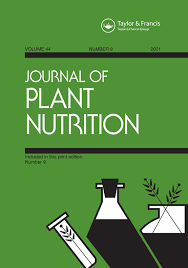Ver ítem
- xmlui.general.dspace_homeCentros Regionales y EEAsCentro Regional Mendoza - San JuanEEA MendozaArtículos científicosxmlui.ArtifactBrowser.ItemViewer.trail
- Inicio
- Centros Regionales y EEAs
- Centro Regional Mendoza - San Juan
- EEA Mendoza
- Artículos científicos
- Ver ítem
Compost tea and bioslurry as plant biostimulants. Part 2: biofertilizer test in ornamental flowers
Resumen
The present study tested the effect of aerated (AM), non-aerated (NAM), a 1:1 combination of both compost teas (A-NAM), and bioslurry (B) as bio-fertilizers in two ornamental plants growing in different substrates. The present study aimed to evaluate the products as biostimulants in ornamental plants. Compost teas were brewed from a composted mixture of residues, while bioslurry was prepared, with fresh material and no aeration. Two ornamental plant
[ver mas...]
The present study tested the effect of aerated (AM), non-aerated (NAM), a 1:1 combination of both compost teas (A-NAM), and bioslurry (B) as bio-fertilizers in two ornamental plants growing in different substrates. The present study aimed to evaluate the products as biostimulants in ornamental plants. Compost teas were brewed from a composted mixture of residues, while bioslurry was prepared, with fresh material and no aeration. Two ornamental plant species were used: Petunia hybrida and Impatiens walleriana. Experimental presented a completely randomized factorial design, with two factors: Biostimulants with 6 levels: AM, NAM, A-NAM, B, F (traditional fertilizer), and H2O (control); and Substrate, with 3 levels: sand, commercial, and compost. Bio-inputs presented variable properties and effects on plant growth, with significant interaction between factors. In sand, no effect of bioproducts on plant biomass, SPAD index and pigments content were observed. In compost, B significantly increased I. walleriana and P. hybrida dry biomass (1.75 ± 0.42 g and 1.54 ± 0.28 g, respect to 1.33 ± 0.18 g for H2O), while in the commercial substrate, only in P. hybrida (1.35 ± 0.44 g, regarding 0.42 ± 0.11 g for H2O). All bio-inputs increased pigments content of both plant species in all substrates. To our knowledge, this is the first record that B was tested, which increased plant biomass at similar values to traditional fertilizer. We demonstrated that the biostimulants brewed from organic residues might present the same performance as commercial fertilizers.
[Cerrar]

Autor
Fuente
Journal of Plant Nutrition 46 (13) : 3041-3052 (January 2023)
Fecha
2023-01
Editorial
Taylor and Francis
ISSN
1532-4087
Documentos Relacionados
Formato
pdf
Tipo de documento
artículo
Proyectos
(ver más)
INTA/2019-PE-E1-I009-001, Intensificación sostenible de los sistemas de producción bajo cubierta (hortalizas, flores y ornamentales)
Palabras Claves
Derechos de acceso
Restringido
 Excepto donde se diga explicitamente, este item se publica bajo la siguiente descripción: Creative Commons Attribution-NonCommercial-ShareAlike 2.5 Unported (CC BY-NC-SA 2.5)
Excepto donde se diga explicitamente, este item se publica bajo la siguiente descripción: Creative Commons Attribution-NonCommercial-ShareAlike 2.5 Unported (CC BY-NC-SA 2.5)


